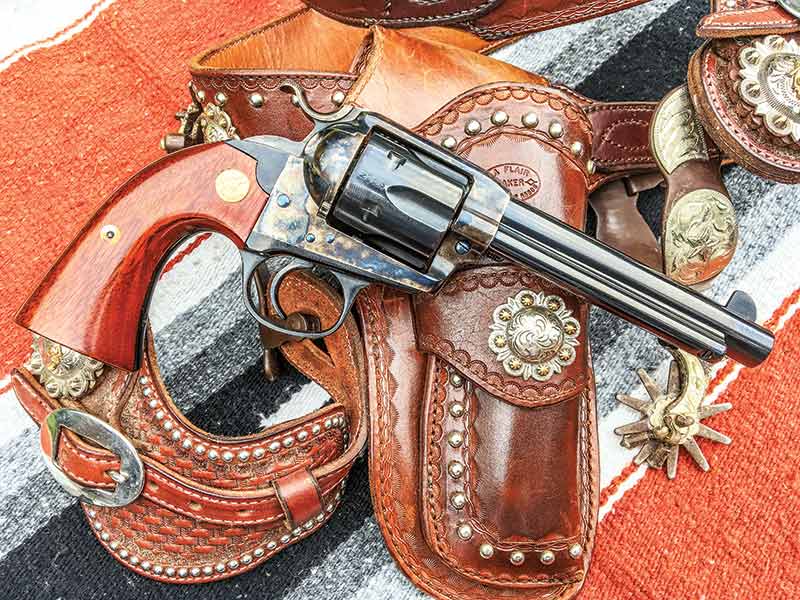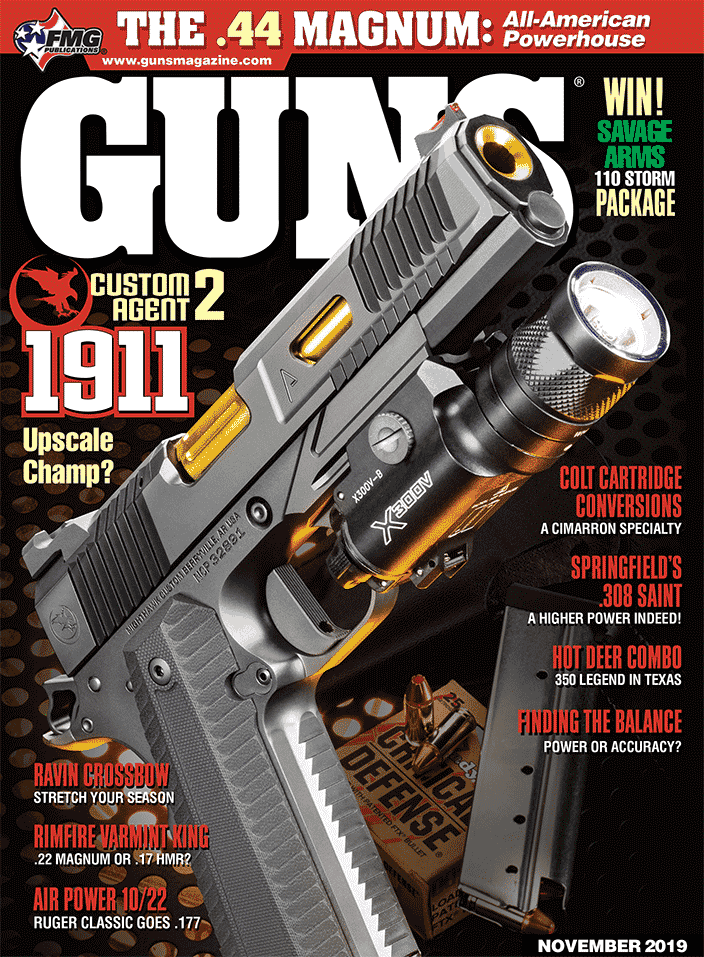Crossfire: November 2019
1894 Marlin Questions
Liked your article about the 1894 Marlin in .38/.357. I am working on a woods gun for deer in cover. My question is — does the microgroove rifling prefer soft lead bullets? The soft Berrys and the extra long 180-gr. XTP seem to be my most accurate. I’m thinking if the bullets were 0.358″ instead of 0.357″ I might have better luck. What do you think? Also does the lack of a .38 special stamp on the barrel mean I can’t shoot .38s out of it? —Dave Schmidt, via email
Conventional wisdom is the Ballard style rifling does better with cast bullets, while microgroove rifling is better with jacketed bullets. I can see this if you’re talking .30-30 or .32 Special velocities over 2,000 fps as theoretically at least, cast bullets would seem more likely to skid and lead with the shallower grooves of microgroove barrels.
Theory is all very well yet I’ve read many reports from shooters getting good accuracy with hard cast lead bullets in 1894 .357s with microgroove rifling. I shoot a lot of .38 Special rounds loaded with 158-gr. lead bullets at about 1,100–1,200 fps which work fine with minimal leading problems and light recoil — just a fun round to shoot. If I wanted to get over 1,500 fps with lead bullets I’d use a hard cast bullet, most likely with gas checks. —Dave Anderson
Dave Anderson’s article “Marlin’s 1894C .357 Magnum” in the August 2019 magazine was interesting in the fact he is “less pleased” with the manual cross-bolt safety added to the Marlin lever actions in 1969. I have Marlin’s .41 magnum and .308 Marlin Express rifles and was also less than pleased with the cross-bolt safety until I discovered “TURNBULL” makes a replacement for this cross bolt! Even I was able to install the rod in a matter of minutes. I highly recommend when installing Turnbull’s replacement you do so over a bedsheet or large towel as there is a small ball bearing involved, and believe me it can roll to unknown places! —David Connor, via email
A quick question for Dave Anderson. I enjoyed his article about the Marlin 1894. I recently bought one. Where do I find the date code telling when the rifle was manufactured? I have a Marlin 1894CS .357 Mag. as the one he bought. I enjoy your magazine. —Dale Broam, via email
Many Marlin firearms (but certainly not all) manufactured 1941–2011 follow a system wherein the first two letters or numbers of the serial number indicate the date of manufacture. After 2011 the letters became “MR” (some suggest this is due to production moving to the Ilion, NY Remington plant). Fortunately there are many references on the internet to this numbering code or I’d suggest investigating the Marlin Firearms Collectors website www.marlin-collectors.com). —BW
Beautiful Bisley
I really enjoyed Alan Garber’s Bisley revolver article. There is something beautiful and strange about the Bisley.
Earlier this year I was in my favorite old school gun store. A young woman walks in with a box and says “I inherited my grandfather’s gun and I want to sell it.” The salesman is an old wheelgunner and his jaw drops when she pulls an old Bisley out of the box. The young woman said she was offered $400 for it at a pawn shop. The clerk told her “I will try to sell it for $1200 and I can offer you $1000.” She was happy and I got to see my first Colt Bisley in the flesh.
I love GUNS/American Handgunner. Please never stop. —Ryan Guzek, via email
Washing Machine vs. Python
Several months ago you published a letter from a fellow who, some years ago, was dispatched by his wife with $300 to buy a washing machine. On the way, he stopped by the local gun store and spent the money instead on a new Colt Python. His wife was not amused then, and is not now!
Please more fully consider the consequences of such a letter. My wife shares my passion for “walnut and blue” guns, and I shared the letter with her. The next time I left the house, she shoved $300 in my pocket and told me to come back with a Colt Python. I am now in kind of a fix!
Keep up the outstanding work. I truly enjoy your magazine! —Dave Shelby, via email
Snakes Alive
Will Dabbs (regarding Shooters RX “Snakes Alive” in August 2019) — Linda opened the kitchen door to find a coiled rattler. Dog started at it and she commanded “GET BACK!” The first gun she came to was a 5 1/2″ single action in 44 Mag. The snake is down on the first step so she shot through the porch and put two rounds and a thousand splinters through that critter but it was still moving. She cussed the ammo, dumped those and reloaded with different bullets. With a rest she put two holes in its head but it was still moving. She cut off the head with an axe, put it down a ground squirrel hole and the body in a box. She told me, “My ears rang for 2 1/2 hrs, the snake was still moving when it got dark, and that’s my pistol now.” —Unknown, via email
I’ve been a fan and subscriber to both GUNS and American Handgunner for more years than I care to count! Your publications are second to none!! In the August 2019 edition of GUNS, Will Dabbs penned an article on venomous snakes that I enjoyed. As a lifelong North Florida Southerner I would like to add that Will left out the most dangerous snake of all! It’s the snake that has caused more damage and injury than all others combined! It’s found throughout the United States. It’s called the “stick that looks like a snake!!” I’ve been attacked by several in my life — I’m with you on snakes, Mr.Dabbs! —Larry K., via email






